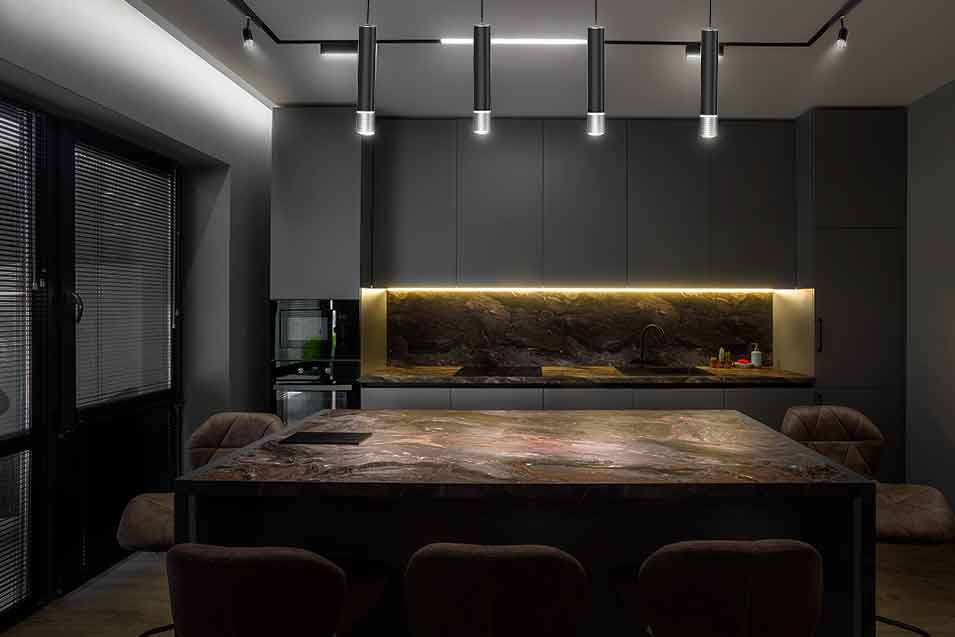
How LED Lights Can Help Lower Your Electricity Bill
21st November 2025 | Written By: Rika Aash | Read Time: 3min | Last Updated: 21st November 2025
Lighting accounts for 15 to 20 per cent of an electric bill, and with the rising energy costs, it’s important to choose lights that consume less power. LEDs are used widely now-a-days as they are highly energy-efficient compared to incandescent bulbs. While incandescent bulbs waste up to 90 per cent of their energy as heat, LEDs convert most of their energy directly into light. A 10W LED bulb offers the same brightness as a 60W traditional bulb, reducing energy consumption by 70–80 per cent. In this blog, let us understand in detail how LED lights work and factors that influence the power usage of LED lights.
How does a LED light work?
Light Emitting Diodes (LED) light works by passing an electric current through a semiconductor (a diode), which then emits light when energized. Unlike traditional bulbs, LEDs don’t use a filament or produce heat to create light. Instead, they convert electricity directly into illumination.
How to calculate LED light power consumption?
To calculate an LED light’s power consumption and cost, consider its wattage and duration of use. For example, if a 10-watt LED is used for 5 hours a day, the consumption is:
20 W × 5 hours = 100 watt-hours (Wh).
Convert this to kilowatt-hours: 100 Wh ÷ 1,000 = 0.1 kWh.
To find the cost, multiply the energy consumed (kWh) by your electricity tariff (₹/kWh).
For instance, if the rate is ₹4 per kWh:
Cost = 0.1 kWh × ₹4 = ₹0.40.
Factors affecting the power usage of LED lights
- Wattage: The higher the wattage of an LED, the greater its power consumption. However, the power consumed by an LED light is far less compared to that used by incandescent or CFL bulbs.
- Lumen output: LEDs with higher lumen output or brightness require more power to produce brighter light.
- Colour temperature: LED power consumption varies based on its colour temperature. Due to differences in the LED chips and phosphor material, warm-coloured lights tend to consume less power than cooler-coloured ones.
- Dimming capabilities: Dimmable LEDs allow users to adjust brightness to their liking. However, it’s important to note that not all LEDs are dimmable, and using an incompatible dimmer switch can result in flickering or inefficient power consumption.
- LED quality: The quality of an LED and internal components like drivers and heat sinks directly impacts the power usage of LED lights. High-quality LEDs with efficient thermal management tend to consume less energy.
Factors affecting the power usage of LED lights
- Look for lumens of the light rather than watts. The greater the lumen, the brighter the LED light. Hence, select 1200+ lumens for kitchens, 800-1000 lumens for living rooms, and 400-600 lumens for bedrooms.
- Choosing the right colour temperature according to your need and room will help in cutting energy costs. Cool white is best for kitchens, study rooms, neutral white for dining areas or hallways and warm white for bedrooms or living rooms.
- Check for CRI (Colour Rendering Index). A CRI above 80 is good; 90+ is ideal for natural colour accuracy.
- Check for IS/BSI certification as it ensures safety, performance, and long-term reliability.
LED lighting is one of the simplest yet impactful way to lower your electricity bill. Thes lights are both economic and eco-friendly. Whether you’re illuminating your living room, workspace, or outdoor areas, LEDs deliver bright, reliable, and cost-effective lighting for every corner of your home. Making the switch today can lead to noticeable savings and a greener lifestyle tomorrow.

Frequently Asked Questions (FAQs) :
- Q1. Which LED colour temperature saves the most energy? LED colour temperature doesn’t make a significant difference; whether warm, cool, or daylight, all LEDs consume nearly the same amount of power. What does help save energy is choosing a high-efficiency LED with a good lumen-per-watt rating, regardless of the colour temperature.
- Q2. Do dimmable LEDs help save energy? Yes, dimmable LEDs help save energy. When you lower the brightness, the LED draws less power, which reduces electricity consumption and can extend the bulb’s lifespan.
- Q3. Do brighter LEDs consume more electricity? Brighter LEDs can consume a bit more electricity because they produce more light. However, they remain significantly more energy-efficient compared to older lighting technologies.
- Q4. How much electricity does an LED bulb use compared to a CFL or incandescent bulb? An LED bulb uses significantly less electricity than both CFLs and incandescent bulbs, often consuming 70 to 80 percent less energy than incandescent and about 40 to 50 percent less than CFLs while producing the same brightness.




